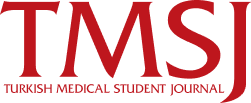ABSTRACT
Aims:
Is there a difference, from a clinical point of view, between a first year resident and a 4th year one, in the branch of Cardiology? If so, do we need to diminish it? And more importantly, do we have the tools? In this study it is aimed to evaluate medical simulation and its applicability in cardiology as an education method contributing to make students and residents more experienced and sufficient.
Methods:
The descriptive, cross-sectional study based on a survey which was applied to the groups of students in Carol Davila’ University of Medicine and Pharmacy (146) and residents (33 out of which 18 in the first two years and 15 in the last 3 years) was conducted between November 2014 and January 2015. Responses regarding evaluation of medical simulation as an education method were analyzed by using descriptive statistics including frequencies and percentages.
Results:
The results showed that with the usage of medical simulation as an education method 128 (87.6 %) students would have felt more confident and learnt faster, while 113 (77.5%) students would have found studying more appealing. Furthermore 10 (68%) of residents in the 3rd, 4th, 5th year would have felt more experienced, if they actually encountered rare simulated pathologies; thus 16 (91%) of the residents in the 1st, 2nd year thought the risks would have decreased for patients.
Conclusion:
Medical Simulation remains a necessity as an education method to improve practical skills of both students and residents in branch of cardiology.



